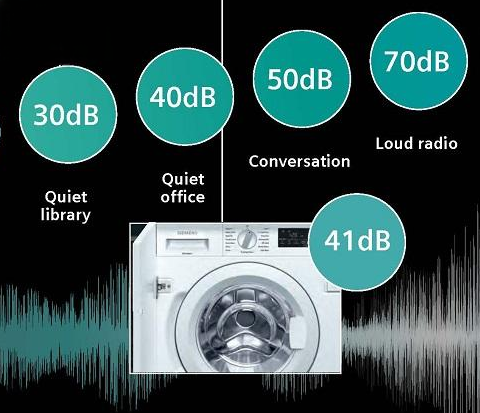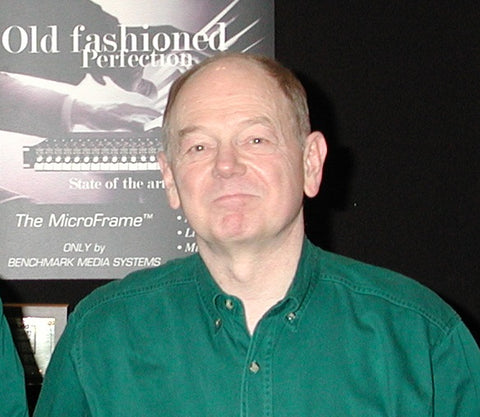Thanksgiving Special - Buy one component* and get additional components at 25% off! Offer ends Dec. 4. We are closed 11/27 and 11/28. Reopening Monday 12/1.
Thanksgiving Special - Buy one component* and get additional components at 25% off! Offer ends Dec. 4. We are closed 11/27 and 11/28. Reopening Monday 12/1.
Benchmark ... The Measure of Excellence®
by Benchmark Media Systems March 19, 2016

Benchmark - a standard or point of measurement to which other things can be compared
As our name implies, we are committed to excellence. Our award-winning products define the current state-of-the-art in terms of audio performance.
Benchmark products are designed and built by audio enthusiasts. We are musicians, audiophiles and audio professionals who are passionate about audio quality. We also are passionate about the durability and build quality of our products. Most of our products are designed, assembled, tested, and shipped worldwide from our headquarters in Syracuse, NY, USA, where we have been for over 40 years.
Our goal is to build top-quality sonically-transparent products that you will enjoy for years to come.
Transparent Audio Products
When you see the Benchmark name on an audio product you can be assured that the product has been designed to be sonically neutral and transparent. This means that we are focused on building products that have an accurate impulse response. It also means that our products produce very little distortion or noise. The accurate impulse response is an indication of our focus on maintaining an accurate phase response, as well as a very wide and flat frequency response. Transparency can be measured and defined by these parameters.
Is Transparency Right for You?
If you are looking for audio products that will change or enhance the sound of your music, you have come to the wrong place. If you are looking to add a warm veil of even-harmonic distortion, you have also come to the wrong place. On the other hand, if you are looking for accurate, clean, and transparent audio equipment, you will enjoy Benchmark products.
Transparency in the Studio, Transparency in the Home
Transparency is essential in a studio monitoring chain but it is also important in a home listening environment. Transparent home systems can recreate the studio experience. The electronics get out of the way and allow you to experience the music.
If you want to hear your music the way the artists heard it in the studio, you will need a transparent playback system.
Transparency Connects the Listening Space to the Performance Space
If the entire recording and playback chain is transparent, the listener can be transported to the performance space. This is the magic of music. It is enabled by the magic of a transparent audio chain - from the performance space to the listening space. Enjoy the magic!
Professional Audio Products with In-Home Applications
Benchmark products are designed for professional applications, but we include features and certifications that make our products well-suited to the home environment. Our products are designed for demanding 24-hour a day use in professional environments but we offer options, such as remote control, to meet the needs of our audiophile customers.
IT ALL BEGAN IN 1983
Benchmark began in 1983 as the "Benchmark Sound Company", a small operation working out of a garage in Garland, Texas.
Allen H. Burdick, Founder
Our founder, Allen H. Burdick, began by building very high-performance audio equipment to meet the specialized needs of television broadcast facilities. The company quickly grew, and was incorporated as Benchmark Media Systems, March 5, 1985. Benchmark expanded into additional audio markets, and relocated to Allen's home town, Syracuse, NY. To this day, all Benchmark products are designed, assembled and tested in our Syracuse facility.
The graphic in the background of Allen's photo states: "Old fashioned perfection ... state of the art performance". Benchmark still faithfully follows these guiding principles set down by Allen Burdick.
John Siau, VP, Director of Engineering
Allen's vision and passion for audio has been carried forward by John Siau. Under John's direction Benchmark has continued to lead the industry with outstanding award-winning audio products.
AHB2 Power Amplifier
Our AHB2 power amplifier is a product that would have made Allen proud. It has the lowest distortion and lowest noise of any audio power amplifier at any price. Like many of our current products, the AHB2 was designed after Allen's retirement. Due to health problems, Allen was unable to participate in the design of any products released after 2007. Nevertheless, each new product closely follows Allen's vision for building transparent audio products.
Just hours before we announced our new power amplifier, we received the sad news that Allen had passed away. In honor of Allen H. Burdick, the AHB2 power amplifier bears his initials.
See "History of the AHB2 Power Amplifier" for the rest of this story!
Listening vs. Measuring
- Transparent products will usually produce an impressive set of measurements.
- Non-transparent products will usually produce a "poor" set of measurements.
- Impressive measurements do not necessarily guarantee that transparency has been achieved.
- Transparency must be confirmed with listening tests.
Some very high-quality products are not transparent because they are intentionally designed to produce an audible effect or enhancement. For this reason, measurements are much less useful when evaluating non-transparent products. Distortion and frequency contouring are often added to create euphonic effects. A "poor" set of THD measurements may indicate that the product is carefully crafted to produce a warm overlay of even-order harmonics. A "poor" set of frequency response measurements may indicate that the product has been designed to contour the frequency response.
In contrast, Benchmark products are designed for transparency. This means that measurements can form an important part of our design process. Nevertheless, we understand that measurements don't always tell the full story.
Measurements don't always tell the full story
It is very important to verify transparency by listening. Many times, we have detected problems in listening tests that didn't show up in a basic set of measurements. Usually this was an indication that the measurements were incomplete.
We have learned that if we hear something that didn't show up in the measurements, then we haven't done the right measurements! Over the years, our listening tests have helped us to refine our measurement techniques. We have learned how to detect and quantify defects that were initially revealed only by human ears.
When measurement techniques are adequately refined, defects can be quantified and design changes can be evaluated objectively. Measurements then allow us to refine a product until the defect is reduced to inaudible levels. In the end, the refinements need to be confirmed by listening tests.
Benchmark's Listening Room

Benchmark's listening room is equipped with a number of popular studio monitors (active and passive) and with passive hi-fi loudspeakers. It is also equipped with an ABX tester that is used to conduct double-blind tests. In the photo to the left, we were comparing a selection professional near-field monitors in a carefully calibrated setup. The passive monitors were driven by the AHB2 power amplifiers. This test demonstrated the improved clarity provided by external amplification. In addition, the AHB2 to passive monitor solutions were completely noise free. In contrast, each of the active monitors produced some audible noise. Powered monitors may be cost effective, but the performance clearly seems to suffer.
Also in Audio Application Notes

How Loud is the Distortion from Your Power Amplifier?
by John Siau August 08, 2025
Would you put a Washing Machine in your Listening Room?
If the answer is no, you may be surprised to discover that the distortion produced by your power amplifier may be louder than the noise produced by a major appliance.
Don't believe me? Take a look at Stereophile's test reports:
We selected 7 power amplifiers from Stereophile's top list of recommended amplifiers.
We took Stereophile's "THD+N vs. Power" plots for each, and replotted the data in a format that shows the loudness of the THD+N at the listening position.
The results are shocking!
Amplifier THD+N is louder than expected!
The distortion from your amplifier may be louder than a washing machine on the spin cycle, or it may be totally silent. How does yours perform? The answer is hidden in Stereophile's THD+N plots.
This application note reveals the hidden truth:
"The Distortion from your Power Amplifier may be Louder than a Washing Machine!"
I know, it sounds crazy, but this is what the measurements show!

Interpolator Overload Distortion
by John Siau November 20, 2024
Most digital playback devices include digital interpolators. These interpolators increase the sample rate of the incoming audio to improve the performance of the playback system. Interpolators are essential in oversampled sigma-delta D/A converters, and in sample rate converters. In general, interpolators have vastly improved the performance of audio D/A converters by eliminating the need for analog brick wall filters. Nevertheless, digital interpolators have brick wall digital filters that can produce unique distortion signatures when they are overloaded.
10% Distortion
An interpolator that performs wonderfully when tested with standard test tones, may overload severely when playing the inter-sample musical peaks that are captured on a typical CD. In our tests, we observed THD+N levels exceeding 10% while interpolator overloads were occurring. The highest levels were produced by devices that included ASRC sample rate converters.

Audiophile Snake Oil
by John Siau April 05, 2024
The Audiophile Wild West
Audiophiles live in the wild west. $495 will buy an "audiophile fuse" to replace the $1 generic fuse that came in your audio amplifier. $10,000 will buy a set of "audiophile speaker cables" to replace the $20 wires you purchased at the local hardware store. We are told that these $10,000 cables can be improved if we add a set of $300 "cable elevators" to dampen vibrations. You didn't even know that you needed elevators! And let's not forget to budget at least $200 for each of the "isolation platforms" we will need under our electronic components. Furthermore, it seems that any so-called "audiophile power cord" that costs less than $100, does not belong in a high-end system. And, if cost is no object, there are premium versions of each that can be purchased by the most discerning customers. A top-of-the line power cord could run $5000. One magazine claims that "the majority of listeners were able to hear the difference between a $5 power cable and a $5,000 power cord". Can you hear the difference? If not, are you really an audiophile?




